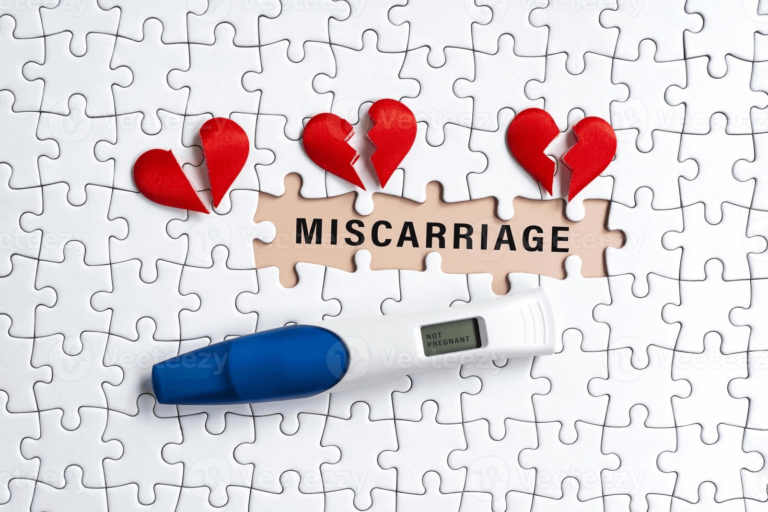Understand & Manage Gestational Diabetes

Gestational diabetes is a type of diabetes that happens during pregnancy. It affects about 6-9% of pregnancies in the U.S. Managing it well is key to avoid problems and have a healthy pregnancy. It’s important to know how to manage gestational diabetes effectively.
With the right info and help, you can manage your gestational diabetes well. This article will guide you through symptoms, diagnosis, treatment, and management. You’ll learn how to control your blood sugar, make healthy choices, and work with your doctor for the best results.
Understanding and managing gestational diabetes can help you have a healthy pregnancy. It involves diet, exercise, and sometimes medication. You’ll learn how to make smart choices for your care and manage your gestational diabetes.
Key Takeaways
- Approximately 6-9% of pregnancies in the U.S. are affected by gestational diabetes
- Managing gestational diabetes is key to avoid problems and have a healthy pregnancy
- Proper management includes diet, exercise, and sometimes medication
- Knowing your blood sugar levels is vital for managing gestational diabetes
- Working with your healthcare provider is critical for the best outcome
- With the right info and guidance, you can manage gestational diabetes and have a healthy pregnancy
What is Gestational Diabetes and How Can You Manage It?
Gestational diabetes happens during pregnancy, usually around the 24th week. It’s when the body can’t make enough insulin, causing high blood sugar. It’s important to manage it to avoid problems and have a healthy pregnancy.
You can control your blood sugar by checking it before breakfast and after meals. Try to keep levels under 6.1 mmol/l before meals and under 7.8 mmol/l after meals.
Knowing gestational diabetes symptoms is key. Symptoms include feeling very thirsty, needing to pee a lot, feeling tired, and blurry vision. If you notice these, see your healthcare provider right away.
Also, knowing gestational diabetes risks helps prevent it. Women with a family history of diabetes, who are overweight, or have had big babies are at higher risk.
To lower your risk, focus on gestational diabetes prevention. Keep a healthy weight, eat well, and exercise regularly. Aim for 150 minutes of moderate exercise a week to help control blood sugar.
By understanding gestational diabetes and managing it, you can lower risks and have a healthy pregnancy.
Understanding Blood Sugar During Pregnancy
Blood sugar levels are vital in managing gestational diabetes. Regular checks help spot changes and take action. Your healthcare provider might suggest tests like a glucose challenge or tolerance test to check your levels.
Recognizing the Signs: Gestational Diabetes Symptoms
As you go through your pregnancy, knowing the gestational diabetes symptoms is key. The American Diabetes Association says about 10% of pregnant women get gestational diabetes. Spotting these signs early is important for getting the right treatment.
Common gestational diabetes symptoms are feeling very thirsty and needing to pee a lot, feeling tired, and seeing things blurry. If you notice any of these, talk to your doctor right away. They will do tests to see if you have gestational diabetes.
Some women with gestational diabetes don’t show any symptoms. So, doctors usually check for it between 24 and 28 weeks of pregnancy. If you’re found to have it, your doctor will help you make a plan to manage it. This way, you can have a healthy pregnancy.
Remember, getting diagnosed with gestational diabetes isn’t something to worry about. With the right care, you can lower the risks and have a healthy pregnancy. By knowing the gestational diabetes symptoms and getting help when needed, you can take care of yourself during this important time.
Diagnosis and Testing: What to Expect
Understanding the testing process for gestational diabetes is key. Testing usually happens between 24 and 28 weeks of pregnancy. The first test is the glucose challenge test. If your blood sugar is 190 mg/dL or higher, you’ll need more tests.
A follow-up test, the glucose tolerance test, confirms the diagnosis. You’ll fast for 8 to 10 hours before the test. Then, you’ll drink a sugary drink. Your blood sugar will be checked at 1, 2, and 3 hours later. If two readings are too high, you’ll be diagnosed with gestational diabetes.
Knowing your test results is vital for managing gestational diabetes. Women with this condition must work with their healthcare provider. They’ll create a treatment plan. This might include a healthy diet, exercise, and regular blood sugar checks.
The Impact of Gestational Diabetes on Your Pregnancy
Gestational diabetes can greatly affect your pregnancy. It raises the risk of gestational diabetes complications like high blood pressure and preeclampsia. The American Diabetes Association says women with gestational diabetes face higher risks of preterm birth and even gestational diabetes risks like losing their baby if not treated.
Some possible issues with gestational diabetes include:
- High blood pressure
- Preeclampsia
- Preterm birth
- Stilbirth
Knowing these risks is key. Managing your condition well is vital. You’ll need more prenatal care visits to keep an eye on things.

Understanding gestational diabetes complications and managing your condition can lower risks. Working with your healthcare team is essential. They can help you create a plan to manage your gestational diabetes and avoid complications.
Creating Your Gestational Diabetes Management Plan
Managing gestational diabetes needs a detailed plan. You’ll work with your healthcare team to make one. This plan will cover blood sugar monitoring, healthy eating, and exercise. It’s key to keep you and your baby safe from high blood sugar risks.
When making your plan, aim for realistic goals and track your progress. This might mean checking your blood sugar often, eating well, and staying active. Your healthcare team will tailor the plan to fit your life and health needs.
Blood Sugar Monitoring Guidelines
Checking your blood sugar is a big part of managing gestational diabetes. Your healthcare team will show you how to do this. They’ll tell you when and how often to test, helping you see how food and exercise affect your levels.
Working with Your Healthcare Team
It’s important to work closely with your healthcare team. They’ll help you create a plan, guide you on blood sugar checks, and support you. Together, you can manage your diabetes and lower risks for you and your baby.
Managing gestational diabetes is a team effort. Stick to your plan, check your blood sugar, and choose healthy habits. With the right approach, you can have a healthy pregnancy and manage your diabetes well.
Essential Dietary Changes for Blood Sugar Control
Managing gestational diabetes means focusing on a healthy gestational diabetes diet. This diet helps control blood sugar levels. It’s all about eating whole, unprocessed foods like vegetables, fruits, whole grains, lean proteins, and healthy fats.
A good gestational diabetes nutrition plan includes foods from all groups. You should aim for:
- 6-8 servings of grains, beans, and starchy vegetables
- 3-5 servings of vegetables
- 2-4 servings of fruits
- 4 servings of dairy products
- 2-3 servings of protein-rich foods
Try to cut down on sugary drinks, sweets, and saturated fats. Choose healthy fats like canola, olive, or peanut oil instead. Regular exercise and a balanced gestational diabetes nutrition plan help manage blood sugar and ensure a healthy pregnancy.
Keep track of what you eat and watch your carb intake to control blood sugar. A well-planned gestational diabetes diet and regular exercise can lower the risk of complications. This way, you can have a healthy pregnancy.
Exercise and Physical Activity Guidelines
Managing gestational diabetes means understanding the role of gestational diabetes exercise and gestational diabetes physical activity. These activities help control blood sugar levels. They also help you stay at a healthy weight and improve insulin sensitivity.
The American College of Obstetricians and Gynecologists (ACOG) suggests pregnant women aim for 150 minutes of moderate-intensity aerobic activity weekly. This can be brisk walking, swimming, or cycling. You can split this into 20-30 minutes of exercise daily.
Benefits of gestational diabetes physical activity include:
- Improved blood sugar control
- Weight management
- Reduced risk of complications during pregnancy
- Improved overall health and well-being
Regular physical activity can help women with gestational diabetes manage their condition and reduce the risk of complications. As the American Diabetes Association notes, moderate-intensity exercise can help lower blood glucose levels and improve insulin sensitivity.
Adding gestational diabetes exercise to your daily routine is easy. Try a brisk walk after dinner, swimming, or prenatal yoga. Always check with your healthcare provider before starting any new exercise, even if you’re healthy.
Medical Treatments and Interventions
Managing gestational diabetes involves medical treatments and interventions. Your healthcare provider might suggest gestational diabetes treatment options. These could include insulin therapy or gestational diabetes medication to control your blood sugar.
In some cases, insulin treatment is needed to manage blood sugar levels. This can include:
- Short-acting insulin, such as lispro insulin, to control postprandial blood sugar levels
- Long-acting insulin, such as NPH insulin, to control fasting blood sugar levels
Monitoring and adjusting medication is key to keeping blood sugar levels healthy. Your healthcare provider may suggest regular blood glucose monitoring. They might also adjust your medication as needed.
It’s important to work closely with your healthcare provider to find the best gestational diabetes treatment for you. By following a detailed treatment plan, including gestational diabetes medication and lifestyle changes, you can manage your gestational diabetes. This helps reduce the risk of complications.
Conclusion: Looking Beyond Pregnancy
Gestational diabetes might seem like a short-term issue, but it can affect your health for years. It’s important to keep a healthy lifestyle after your baby is born. This helps prevent type 2 diabetes later in life.
By focusing on gestational diabetes prevention and managing your diabetes risks, you can protect your health. This proactive approach is key to a healthy future.
After having a baby, work with your healthcare team to watch your blood sugar. Aim for a healthy weight with regular exercise and a balanced diet. Routine check-ups are also essential. With the right steps, you can beat gestational diabetes and live a vibrant life.






